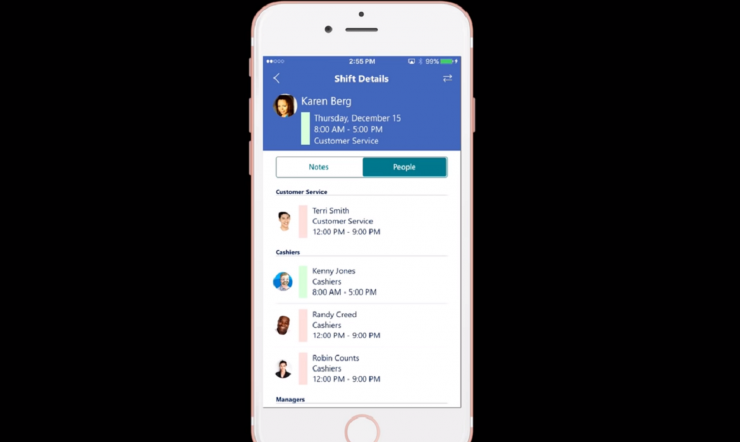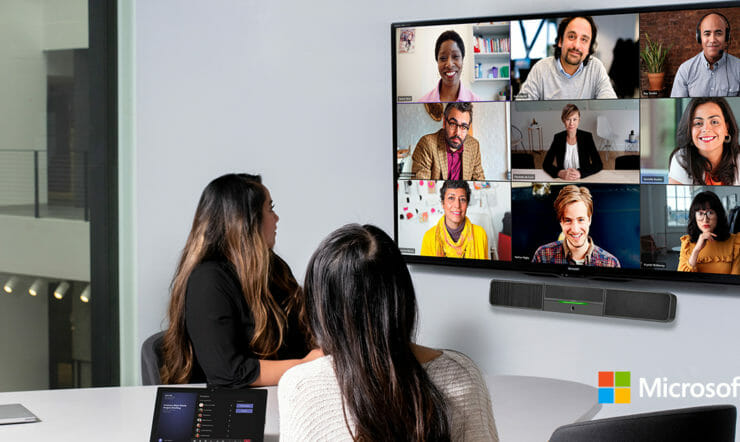Hybrid work constitutes a world of possibilities but is difficult for organizations to fully grasp. Maybe because hybrid work is touching upon some of the fundamental building blocks of every business; the organizational culture and behavior, how we collaborate, and how not least; making everybody feel included, no matter where they work from.
At the center of many of the changes that come with hybrid work stand HR Executives who are facing an increasingly complex task: How to build organizations where everyone feels included and enabled to contribute to the strategic priorities of the business?
To discuss the many aspects of this topic, Microsoft Denmark and HR Director, Camilla Hillerup, once again invited HR professionals to an exclusive roundtable session with the purpose of sharing insights, experiences, and best practices for new ways of working. This time with inclusion as the central topic.
The struggle is real
“It’s not hard to understand why leaders are struggling to manage hybrid work. The new situation is filled with paradoxes that are not easily solved and that can seem like a barrier for inclusion”, Camilla Hillerup initiated the session. The numbers she highlighted speak for themselves: 73% of employees want flexible and remote working options. 67% want more in-person collaboration. That’s a true paradox. But there is more: 50% of leaders would like to go back to full in-person presence. 52% of employees would like to go fully hybrid. How to bridge these seemingly contradictory expectations? A brand-new study from Microsoft also concludes, that there are some trust issues to be managed – productivity paranoia. Camilla Hillerup says: “Our new Work Trend Index shows that 87% of employees report they are productive at work, but 85% of leaders say the shift to hybrid work has made it challenging to have confidence their employees are being productive”.
Obviously, there are no quick fixes or easy answers to these paradoxes, but transparency and clarity are now more important than ever: “We need to make the commute to the office worthwhile and make sure we create belonging and a culture where everyone is able to and feel comfortable contributing. As leaders and managers, it is our responsibility to create clarity for our people regarding when we expect them to come in, what kind of meetings and gatherings require their in-person attendance, and what can be managed digitally or hybrid”, Camilla Hillerup states and continues. “That may sound trite, but 38% of employees don’t know why they need to come into the office and 28% of managers haven’t made agreements with their employees on what’s expected from them. We know that lack of meaning and unclear expectations demotivate people. And with 43% considering changing jobs in the coming year, it’s business critical to keep people motivated and included. Standing still is moving backward”, Camilla concludes.
 We need to make the commute to the office worthwhile and make sure we create belonging and a culture where everyone is able to and feel comfortable contributing
We need to make the commute to the office worthwhile and make sure we create belonging and a culture where everyone is able to and feel comfortable contributing
– Camilla Hillerup, HR Director at Microsoft Denmark.
It’s not coincidental where the milk is placed
Claus F. Christensen is Head of Workplace Experience at EY. He works by combining the bricks that constitute the physical workspace, the bytes that are the technology making it possible for people to collaborate, and the behavior that defines the organizational culture.
“The tricky part is that we can’t just push one of the buttons – because our working experience and sense of inclusion are defined by all the factors. You can have an amazing meeting room, but poor technology – then it doesn’t really matter. Or you can have state-of-the-art technology, but nobody knows what’s expected of them”, Claus says and gives the attendance a challenge: “Close your eyes and picture the best of all working days. What does it look like? Then picture how most of your days are. For many people the gap between the perfect working day and the average one is big. For many, it’s rare the scenarios overlap.”
Claus’ point is that for a hundred years we have worked in the same way – even though several studies show we are wired differently: “Inclusion is also about considering neurodiversity. We are simply not effective and productive at the same time during the day,” he says.
Claus stresses that a strategic approach to hybrid work and inclusion is crucial: “When you enter a supermarket it’s not coincidental where the milk is placed or that there is music in the speakers. That’s part of a carefully designed customer journey. We need to design the workplace in the same careful way taking into consideration the needs and wishes of employees – based on data insights, not gut feeling”.
 In an HR context, Viva is interesting because it provides enhanced HR analytics creating rich and customized insights about employee experience by combining workplace analytics with other operational insights that champion effective and healthier work habits.
In an HR context, Viva is interesting because it provides enhanced HR analytics creating rich and customized insights about employee experience by combining workplace analytics with other operational insights that champion effective and healthier work habits.
– Andreas Aksglæde Stahl, Public Sector Industry Lead at Microsoft Denmark
The digital Swiss knife called Viva
Andreas Aksglæde Stahl is newly appointed Public Sector Industry Lead at Microsoft Denmark but with in-depth knowledge about modern work. As the last speaker, he touched upon the concrete tools that can increase the employee’s feeling of inclusion.
“250 million people are using Teams and the number is increasing. That provides us with unique data insights about behavior that are very interesting in a hybrid working environment”, Andreas says and stresses that our demands for the tools we need have increased:
“We need tools that get the job done effectively but that also help us connect with customers and colleagues, that help us learn and improve and that keep us up to speed with what’s going on in the organization when we are not all working in the office at the same time”. Andreas talks about an employee experience platform that helps organizations create a thriving culture with engaged employees. “That’s essentially why we have introduced Microsoft Viva that is built on top of Teams, that most have grown accustomed to the past years”, he says and adds:
“In an HR context, Viva is interesting because it provides enhanced HR analytics creating rich and customized insights about employee experience by combining workplace analytics with other operational insights that champion effective and healthier work habits”. And that’s really what it’s all about, Andreas concludes: “Creating better, healthier and more inclusive ways of working using both technologies but first and foremost by listening to what employee needs to feel like a truly integrated part of the organization – no matter where they are working from.”




 We need to make the commute to the office worthwhile and make sure we create belonging and a culture where everyone is able to and feel comfortable contributing
We need to make the commute to the office worthwhile and make sure we create belonging and a culture where everyone is able to and feel comfortable contributing In an HR context, Viva is interesting because it provides enhanced HR analytics creating rich and customized insights about employee experience by combining workplace analytics with other operational insights that champion effective and healthier work habits.
In an HR context, Viva is interesting because it provides enhanced HR analytics creating rich and customized insights about employee experience by combining workplace analytics with other operational insights that champion effective and healthier work habits.



















